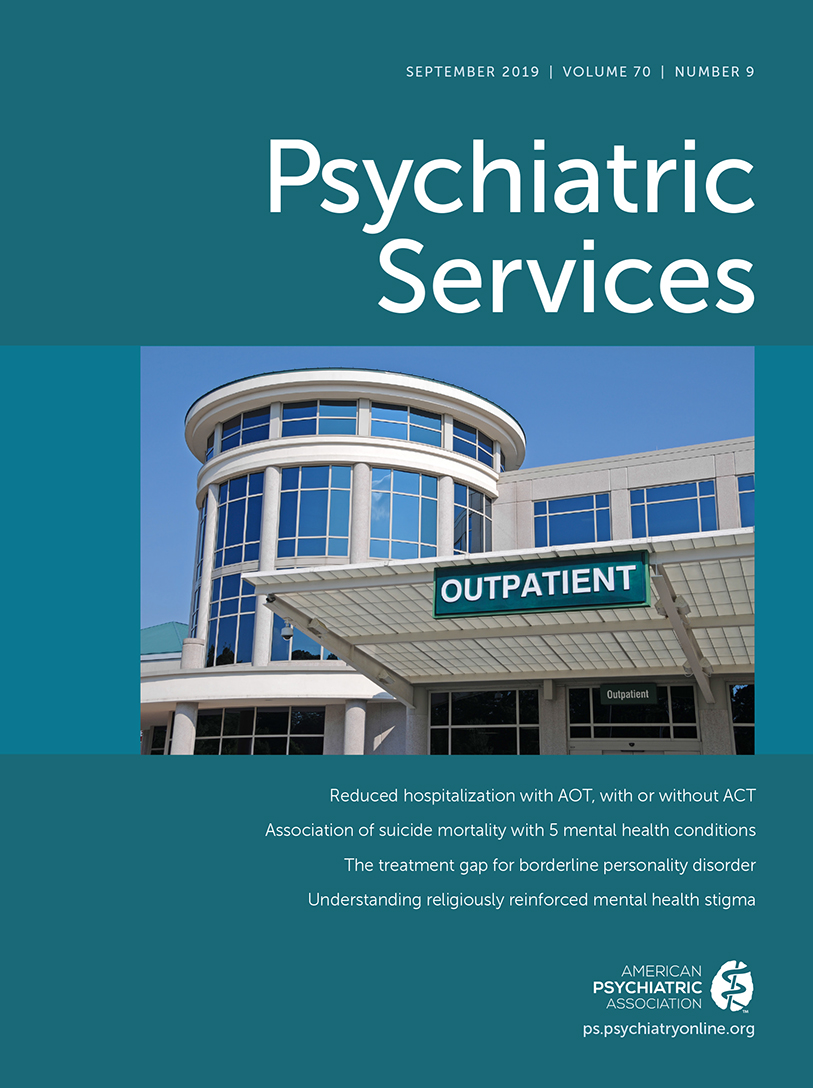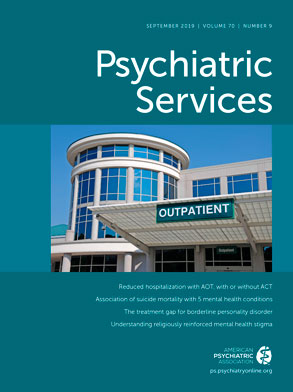I was both excited and nervous to start my psychiatry subinternship on an inpatient unit at a community hospital. I had already decided to pursue a psychiatry residency and had gained clinical experience working in a psychiatric emergency department and a clinical research unit during my clerkships. This rotation would be different: I would be working closely with patients staying in the hospital for longer periods for intensive psychosocial rehabilitation. I prepared diligently by reviewing psychopharmacology, learning DSM diagnostic criteria for common conditions, and memorizing the steps of the mental status exam. I remember asking the attending psychiatrist if he could recommend any readings to me; he told me simply to come with open eyes and an open mind.
On my first day, we admitted a new patient, MB. We had heard that he had borderline personality disorder, had a high propensity for drug use, and posed a high suicide risk. My attending asked if I wanted to conduct the intake interview, and although I was nervous, I agreed, wanting to demonstrate that I could be a competent contributor. I vividly remember how MB appeared to me that afternoon: a young man with a gentle appearance, hunched shoulders, and downcast eyes. He was sitting restlessly in a chair and fidgeting his hands. Although our situations were different, we were experiencing the same feelings—I wasn’t sure who was more anxious. Nervously, with my notes in hand, I started my interview: “What brings you here today?” He resisted eye contact and, after several moments of silence, told me that it had been a long day and asked if we could talk another time. My resident nodded, informing me that MB had already met with nursing staff and that it would be fine for me to continue our conversation later. I felt I hadn’t performed well. I remember thinking it was my task to obtain a complete psychiatric history to develop a differential diagnosis and treatment plan. However, this expectation was not shared by the attending physician, who explained that we would get to know MB more over the coming days. At that time, it was most important to make sure he felt safe and comfortable.
Curious about MB, I looked over his transfer notes, which emphasized his high-risk status and past suicide attempts. His medical history included many hospitalizations from a young age. Daily progress notes suggested that the patient was “resistant” to medical advice, and past admission summaries noted “non-optimal” plans for discharge. His medication regimen was long and complicated and included prescriptions that may have contributed to his addiction. One note justified some of these prescriptions as temporary help for behavioral problems and indicated that they would need to be discontinued eventually. The recommendation for MB to “transfer for long-term care” implied doubt that his condition would improve. Still, I did not feel like I had any meaningful understanding of who he was. I wondered if amid all the chaos in his life and his many rehospitalizations he had a few aspirations of his own.
I expected we would work on optimizing MB’s medication regimen immediately, a topic he seemed very guarded about. However, while I struggled to think of a way to broach this subject with him, my attending devised a treatment plan that first elicited the patient’s own goals for recovery. Later that week, my attending suggested that we meet with MB not in the treatment room, but in our health center courtyard. Instead of leading the conversation with our agenda, we let MB lead with what mattered to him. We assured him that the hospital was also his space and that we wanted to talk about whatever was on his mind. Sitting outside together, we had a winding conversation, during which he spoke about his childhood, his proudest moments while working, and his passion for playing guitar—a passion I happened to share. I felt both a desire to disclose this personal connection and apprehension: Was it appropriate to share personal details with a patient? What would the purpose of this disclosure be?
When I told MB about my own passion for music, he responded with more about his life and talents. With the conversation progressing in this way, we found space for a human connection between us. Our conversation also naturally turned to discussing how MB’s involvement in floor activities within the unit could be aligned with his interests. He seemed just as excited as I was to discover common ground, and when I suggested we participate together in a music group held on the floor, he enthusiastically agreed. While there were concerns about granting a high-risk patient access to a stringed instrument, we were able to create a plan to mitigate such risk, and MB and I decided to meet weekly to make music together.
During my previous rotations, I saw the relationship between physician and patient as a unidirectional transfer of knowledge and expertise from doctor to patient. Participating in the music group showed me that along with training to be a physician, I was also training to be a coparticipant in, cocreator of, and recipient of experiential expertise. During the group, patients and personnel sang together and collaborated on writing lyrics. Rarely during medical school had I encountered spaces where patients were able to exhibit their strengths. Here, one woman sang an upbeat, folksy chorus, a man improvised an intricate rap, and another played the ukulele. Throughout, MB and I provided musical accompaniment while exchanging strumming tips. I could feel a collective joy in the room that animated the songs we performed together.
MB and I also found time to meet weekly in a quiet room with nothing but two chairs, two guitars, and two picks. He taught me a song he wrote, and I played lead melody while he strummed the chords and sang. His music was grungy and moody, structured by minor chords, and when he sang, he appeared both shy and proud to show me this side of himself. During these meetings, we also had long conversations. He shared more about his past, including times when his life was especially difficult. He also spoke of his aspirations and concerns about the future. In the course of our conversations, MB articulated some unique beliefs that were not noted in his chart and that were suggestive of schizotypal experience. When I later reviewed the DSM with his comments in mind, I was able to contribute new information to the team’s working formulation of his personality. Sitting beside me with two guitars between us, MB spoke more openly about his concerns that any changes to his medication would increase his anxiety, but he was ready to start planning.
Sharing these moments made me feel I was reaching a privileged insight; I felt trusted. I asked MB how he felt, and he replied that he was comfortable because I viewed him “as a person, and not as an addict.” Being in the mental health care system for so long, he explained, made him feel that he was viewed as a “case” and a “problem”—that his care providers had disregarded his humanity and individuality.
In recovery-oriented care, I saw how mental health care could align with a patient’s values. Once a month, each patient would lead his or her own recovery planning meeting to discuss goals, strategies to pursue them, and ways the team could be supportive. Patients were encouraged to build their own support community comprising family, peer advocates, and social workers. Here, I found the same collaborative spirit that was present in the music group; each meeting would begin with participants discussing the patient’s strengths. The atmosphere of these meetings contrasted starkly with most other treatment plan meetings during my clerkships, which were conducted without the direct input or presence of the patient and which prioritized the patient’s symptoms and diagnosis over the person and their values.
In preparation for MB’s meeting, we completed a goal planning booklet designed to help patients achieve their goals in different domains (e.g., employment, relationships, housing). Our collaboration would not have progressed with such energy had we not already developed a trusting relationship. MB and I finished this meeting with hope and resolve, and I felt a deep appreciation for his openness in sharing his aspirations. In that moment I saw a glimmer of what recovery means in practice—the agency felt when striving toward a life of meaning and the shared joy of working together toward that goal. As a medical student, I found myself in a situation where I started believing I could make a difference—through mutual trust, openness, and humility, through understanding a person’s lived experience and having faith in their abilities.
Several months after I finished my rotation, I was invited to a team meeting to discuss MB’s care, as he continued to experience difficulties. Although I was upset to hear this news, I was not wholly disheartened—recovery is a complicated journey replete with challenges and successes, and he had demonstrated to me the capacity to forge new relationships along the way. When I look back at how I prepared for my subinternship, I now recognize that the knowledge we possess is best applied collaboratively and when it harmonizes with a patient’s vision for recovery.

